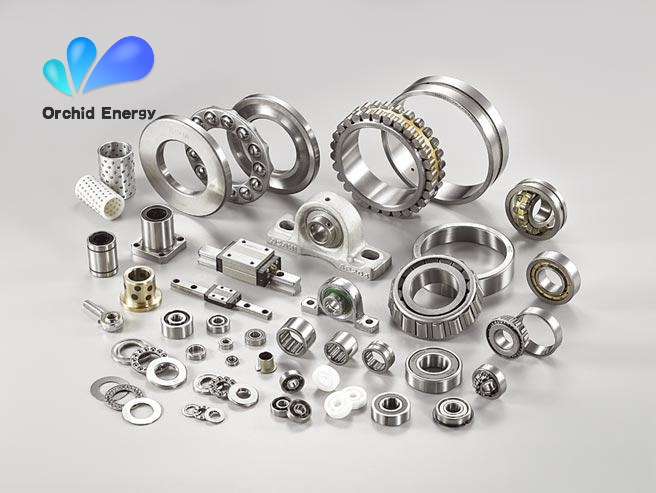The Role of Bearings in the Drilling Industry and Ongoing Technological Advancements
1. Introduction:
Bearings are crucial components in the drilling industry, playing a vital role in ensuring smooth and reliable operations of drilling equipment. These mechanical devices enable rotational or linear motion while minimizing friction and supporting heavy loads. In this article, we will provide a comprehensive overview of bearings used in the drilling industry, highlighting their functions, types, applications, and benefits.

1.1 Functions of Bearings in the Drilling Industry
Bearings perform several critical functions in drilling operations, including:
Load support: Bearings support the weight of rotating drill bits, drill collars, and other equipment, enabling efficient drilling through various terrain types.
-
Shock absorption: They help dampen vibrations caused by drilling activities, reducing stress on the drilling rig and optimizing drilling performance.
-
Precision alignment: Bearings maintain accuracy and stability during drilling, ensuring the correct positioning and trajectory of the drill string.
-
Energy efficiency: By reducing friction, bearings minimize power consumption, which translates to cost and energy savings.
1.2 Types of Bearings Used in the Drilling Industry
Various types of bearings find applications in the drilling industry, including:
-
Ball bearings: Consisting of steel balls housed in a ring, ball bearings provide low friction and high load carrying capabilities, suitable for moderate to high-speed drilling applications.
-
Roller bearings: These bearings feature cylindrical or tapered rolling elements, allowing for higher load capacities and improved resistance to shock and impact loads.
-
Thrust bearings: Designed to handle axial loads, thrust bearings facilitate the axial movement of drill bits and collars, maintaining stability during drilling operations.
-
Sleeve bearings: Also known as bushings, sleeve bearings are self-lubricating and provide excellent wear resistance, making them suitable for harsh drilling environments.
1.3 Applications of Bearings in the Drilling Industry
Bearings are utilized in various drilling applications, including:
-
Rotary drilling rigs: Bearings enable the rotation of drill strings, supporting the weight of drill bits and drill collars. They help maintain stability and precise alignment during drilling operations.
-
Top drives: Bearings are crucial components of top drives, allowing for the smooth transmission of torque and axial movement, facilitating efficient drilling and wellbore management.
-
Mud pumps: Bearings support the rotating components of mud pumps, ensuring consistent pumping performance under high-pressure conditions.
-
Wellhead equipment: Bearings enable the smooth operation of blowout preventers, choke valves, and other wellhead equipment, contributing to safe drilling operations.
1.4 Benefits of High-Quality Bearings in the Drilling Industry
Enhanced Reliability: High-quality bearings minimize equipment failures and downtime, increasing overall drilling productivity.
-
Extended Service Life: Robust and well-lubricated bearings have a longer lifespan, reducing maintenance costs and the frequency of replacements.
-
Increased Efficiency: Reduced friction in bearings improves energy efficiency, leading to reduced power consumption and lower operating costs.
-
Improved Safety: Bearings contribute to the stability and integrity of drilling equipment, minimizing the risk of accidents and ensuring operator safety.
1.5 Comparison Table - Types of Bearings in the Drilling Industry
|
Bearing Type
|
Description
|
Applications
|
|
Ball Bearings
|
Steel balls housed in a ring structure
|
Rotary drilling rigs, top drives, mud pumps
|
|
Roller Bearings
|
Cylindrical or tapered rolling elements
|
Rotary drilling rigs, wellhead equipment
|
|
Thrust Bearings
|
Handle axial loads
|
Top drives, blowout preventers, choke valves
|
|
Sleeve Bearings
|
Self-lubricating, offer wear resistance
|
Rotary drilling rigs, mud pumps, wellhead equipment
|
1.6 Considerations for Bearing Selection in the Drilling Industry
-
When choosing bearings for drilling equipment, several factors should be taken into consideration, including:
-
Load Capacity: Select bearings with sufficient load-carrying capacity to withstand the forces experienced during drilling operations. This ensures optimal performance and prevents premature bearing failure.
-
Operating Speed: Determine the speed at which the bearing will operate, as different bearing types have different speed limits. It is essential to choose bearings that can handle the rotational speeds encountered in drilling applications.
-
Temperature and Environment: The drilling industry operates in various environments, including extreme temperatures, high humidity, and abrasive conditions. Bearings selected must be capable of withstanding such conditions and have appropriate seals or coatings to protect against contamination.
-
Lubrication: Proper lubrication is vital for bearing longevity and performance. Consider the availability of lubrication systems and select bearings that can self-lubricate or can be easily lubricated in the field.
-
Maintenance and Replacement: Assess the ease of maintenance and availability of replacement parts for the selected bearings. Opt for bearings with well-documented maintenance procedures and ensure the availability of spare parts for efficient operations.
1.7 Ongoing Advancements in Bearing Technology
Technological advancements continue to drive improvements in bearing design and performance. Some recent developments in the field include:
-
Advanced Materials: The introduction of high-performance materials, such as ceramic or advanced metal alloys, enhances bearing strength, durability, and resistance to harsh conditions.
-
Sealing and Coatings: Innovative sealing solutions and coatings protect bearings from contaminants, extend service life, and reduce maintenance requirements.
-
Condition Monitoring: Integration of sensors in bearings enables real-time monitoring of performance parameters such as temperature, vibration, and lubrication levels, enabling predictive maintenance and reducing downtime.
-
Lubrication Technologies: Improved lubrication techniques, including advanced grease formulations and solid-state lubricants, enhance bearing efficiency and extend maintenance intervals.
In conclusion, bearings are essential components in the drilling industry, enabling smooth and efficient drilling operations. By understanding their functions, types, applications, and benefits, both professionals and non-professionals can appreciate the crucial role that bearings play in the success of drilling projects. Through careful selection and ongoing advancements, high-quality bearings continue to contribute to increased reliability, improved efficiency, and enhanced safety in the drilling industry.
As a crucial component in drilling equipment, bearings play a vital role in ensuring smooth and efficient operations. In this article, we will explore the key considerations for choosing the right bearings, including load capacity, operating speed, temperature resistance, lubrication, and maintenance. Additionally, we will delve into the ongoing advancements in bearing technology that are revolutionizing the drilling industry.
2023-08-17




